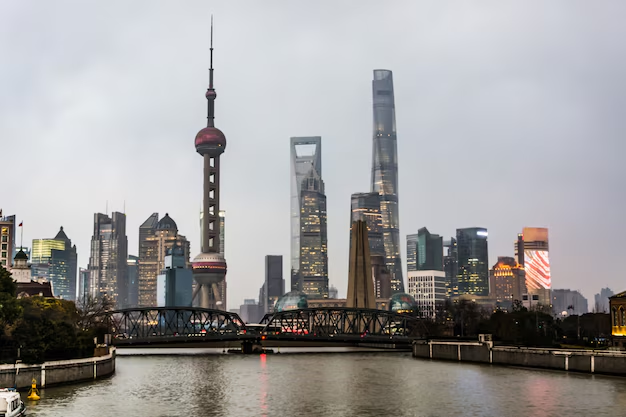
The US-Canada trade war, reignited by the Trump administration’s aggressive 25% tariff on Canadian goods, is no longer just an economic skirmish—it’s wreaking havoc on tourism, hospitality, and aviation across North America. As tensions escalate, the ripple effects are hitting border cities, small businesses, and major airlines harder than anticipated.
Canada-US air travel bookings have dropped a staggering 70% year-on-year, according to aviation data firm OAG. Airlines have slashed flight capacity through October 2025, with July and August—once peak travel months—now forecasted to be among the weakest in decades. Key routes between Toronto, Vancouver, New York, Chicago, and Los Angeles are being scaled back or suspended altogether.
Hospitality is also feeling the heat. Hotels, restaurants, and event venues in cross-border hotspots like Niagara Falls, Buffalo, and Montreal are reporting mass cancellations. Canadian tour operators are shifting focus to domestic travel, while US destinations lose millions in visitor spending.
Flight Centre Canada reported a 40% drop in US-bound bookings, and the Canadian dollar’s slide is making American vacations even more expensive. Meanwhile, future bookings are drying up as travelers hesitate amid political uncertainty.
This is more than a temporary dip—it’s a crisis of confidence. Until the trade war eases and diplomatic ties stabilize, North America’s integrated travel economy remains at risk. Tourism, often seen as apolitical, is now squarely in the crossfire of a tariff war not fought on runways—but with policy and politics.
The once-thriving air travel corridor between Canada and the United States is now in freefall. As of March 2025, passenger bookings on Canada-US routes have plummeted by 70% year-on-year, according to fresh data from global aviation analytics firm OAG. The dramatic collapse is a direct result of the Trump administration’s aggressive tariff policy on Canadian goods—25% levies on key exports like aluminum, lumber, and auto parts—triggering retaliatory measures from Ottawa and setting off a full-blown trade war.

What began as a dispute over economic leverage and border security has now spilled into the tourism sector, creating a ripple effect across airlines, border towns, and small businesses that rely heavily on cross-border traffic. Airlines have slashed seat capacity on these routes through October 2025, with peak summer months—July and August—taking the hardest hit. Leading travel agencies like Flight Centre Canada report a 40% drop in US-bound bookings, while forward demand has all but collapsed.
This aviation crisis threatens billions in tourism revenue and jeopardizes the livelihoods of thousands who depend on seamless Canada-US travel. Regional airports, ski resorts, hotels, and car rental services are already reporting mass cancellations and stalled reservations. With the Canadian dollar weakening further and no sign of policy easing, the future of cross-border tourism hangs in the balance. Until political tensions cool and trust is restored, this vital travel corridor will remain eerily quiet—underscoring the human cost of economic warfare in the skies.
The once seamless air corridor connecting Canada and the United States is now in freefall. According to newly released analytics from global aviation firm OAG, passenger bookings between the two nations have collapsed—down a staggering 70% year-on-year as of March 2025.
This dramatic downturn in air travel comes at a time when diplomatic relations are being tested by escalating tariffs and political tensions. The repercussions are reverberating far beyond trade floors and policy circles—right into the heart of North America’s tourism economy.
Trump’s tariffs take flight—literally
The root cause of this aviation nosedive? A trade war ignited by the Trump administration’s renewed tariffs on Canadian imports. In January 2025, a sweeping 25% tariff was imposed on Canadian aluminum, lumber, auto parts, and agricultural products—ostensibly to combat immigration loopholes and narcotics inflow, though the measures quickly spiraled into a broader economic standoff.
Canada’s response was swift: counter-tariffs on American goods and a hardening of diplomatic lines. But what wasn’t anticipated was the collateral damage to tourism—a sector often seen as apolitical, but now paying a hefty price.
Flight cancellations and capacity slashes intensify
OAG data shows airline capacity between Canada and the US has been slashed across major carriers including Air Canada, WestJet, Delta, United, and American Airlines. The most brutal cuts? July and August—the peak vacation months.
Flight Centre Canada, one of the country’s leading travel agencies, confirmed that U.S.-bound bookings from Canadians have already dropped 40% in Q1 2025 alone. Airlines are now projecting reduced frequencies or outright suspension of select Canada-US routes through October.
With such drastic capacity cuts, the summer travel season—the economic engine of many regional tourism hubs—is already being written off as a loss.

Border communities brace for economic aftershocks
Destinations like Niagara Falls, Buffalo, Vancouver, Seattle, and Montreal have long thrived on quick cross-border tourism. From retail and hospitality to casino resorts and sports tourism, local economies are deeply integrated.
The U.S. Travel Association warned that a mere 10% drop in Canadian tourists could mean nearly 2 million fewer trips and billions in lost revenue. But a 70% decline? That’s not a dent—that’s a crater.
Hospitality operators in upstate New York, ski resorts in British Columbia, and theme parks in Ontario are already reporting record-low forward bookings. Restaurants, car rental companies, and attractions built around weekend and short-stay visitors are witnessing cancellations that haven’t been seen since the height of the pandemic.
A weakening currency adds fuel to the fire
The Canadian dollar, under pressure from trade volatility and investor uncertainty, has also tumbled. As the CAD weakens against the USD, American vacations have become significantly more expensive for Canadians—further discouraging travel south of the border.
This currency disparity only worsens the impact on outbound tourism from Canada, while doing little to attract American visitors who are wary of border instability and unpredictable policies.
Airlines reallocate fleets—Europe and Asia become safer bets
With the Canada-US corridor losing its profitability, airlines are shifting focus. Flights to European leisure hubs like Lisbon, Barcelona, and Rome are seeing increased capacity as demand remains relatively stable. Similarly, routes to Japan, South Korea, and Southeast Asia are being expanded to absorb aircraft originally slated for North America.
These adjustments signal a long-term repositioning rather than a temporary correction. In essence, airlines are hedging their bets that Canada-US travel won’t bounce back anytime soon.
Tour operators pivot to domestic and interprovincial travel
Domestic tourism in both countries is receiving renewed attention. Canadian tour operators are aggressively promoting trips to Banff, Quebec City, Nova Scotia, and Vancouver Island. Meanwhile, U.S. cities like Austin, Charleston, and Denver are ramping up local tourism campaigns targeting domestic travelers.
But while domestic travel may offset some losses, it won’t replicate the economic velocity of international cross-border trips that typically involve longer stays and higher spending.
Travel confidence shattered amid political unpredictability
It’s not just tariffs hurting travel—it’s trust. Political unpredictability has left travelers second-guessing. Will more restrictions be announced? Will border policies change mid-trip? Will flights be canceled without recourse?
This climate of instability has led many would-be travelers to stay put or redirect their plans entirely.
Summer 2025 forecast: A tourism drought
With July and August capacity reduced to historic lows, and forward bookings evaporating, summer 2025 is expected to deliver one of the weakest cross-border tourism performances in decades.
Airlines are not optimistic. Many have preemptively announced fall route reviews. Industry insiders suggest that without immediate de-escalation in trade tensions, even winter travel to traditional U.S. hotspots like Florida and California could suffer.
Stakeholders demand policy action
Travel industry leaders on both sides of the border are urging policymakers to reconsider the tariff strategy. Industry associations are lobbying for tourism exemptions, improved communications, and short-term stimulus measures to revive confidence.
“Tourism is a lifeline for thousands of small businesses. Trade wars might target goods, but the fallout devastates people,” said one senior executive at Destination Canada.
What next? A roadmap to recovery—or further fallout?
If history is any guide, recovery from tourism shocks—be it 9/11, SARS, or COVID-19—takes time, trust, and strategic rebuilding.
Key priorities will include:
- Diplomatic recalibration: Softening tariffs and normalizing trade
- Confidence campaigns: Joint Canada-US marketing efforts to restore trust
- Travel incentives: Discounts, loyalty bonuses, and simplified visa policies
- Airline stability: Protecting route viability through public-private support
However, none of these are likely without political will and cross-border cooperation—elements currently in short supply.
Bottom line: The tarmac tells the tale
Air travel is often the canary in the coal mine for international relations. And today, that canary has crash-landed. Canada and the United States, once hailed for their frictionless borders and integrated economies, now find their skies emptier and their travel future uncertain.
As of March 28, 2025, the Canada-US travel corridor is a casualty not of war or pandemic, but of policy decisions made far from the terminals. The question now is not how quickly travel can resume—but whether it can recover at all.
What’s More in Travel And Tour World
Read Travel Industry News in 104 different regional language platforms
Get daily dose of news from Travel Industry, by subscribing to Travel And Tour World newsletters. Subscribe here.
Watch Travel And Tour World Interviews here.
Read more Travel News, Daily Travel Alert, and Travel Industry News on Travel And Tour World only.
The post How US-Canada Trade War Affects Tourism, Hospitality and Aviation Industry, Everything You Need To Know About Aggressive Trump Tariff Policy appeared first on Travel And Tour World.




Comment (0)